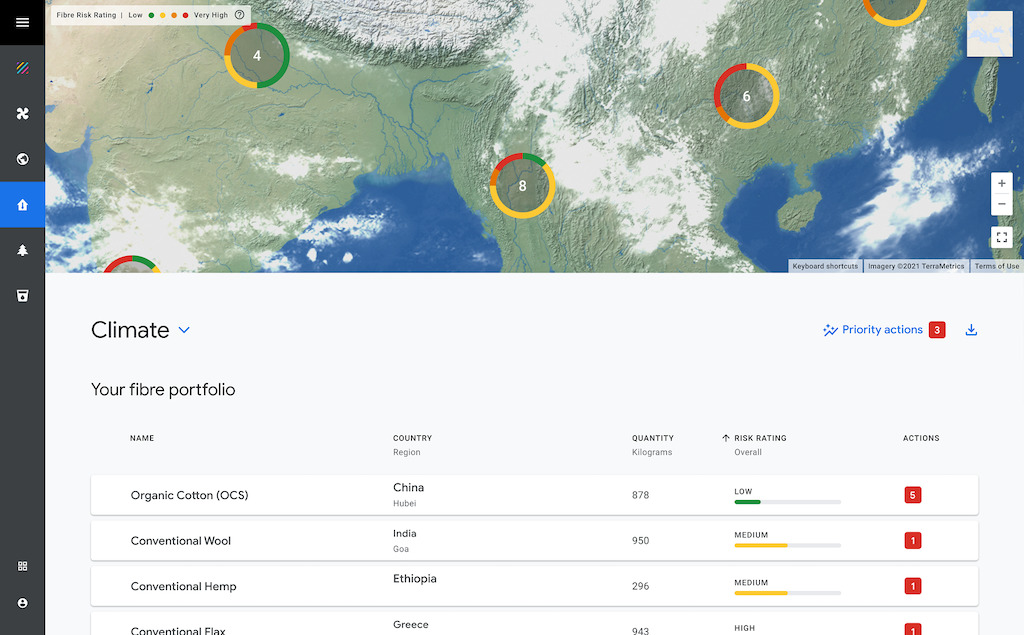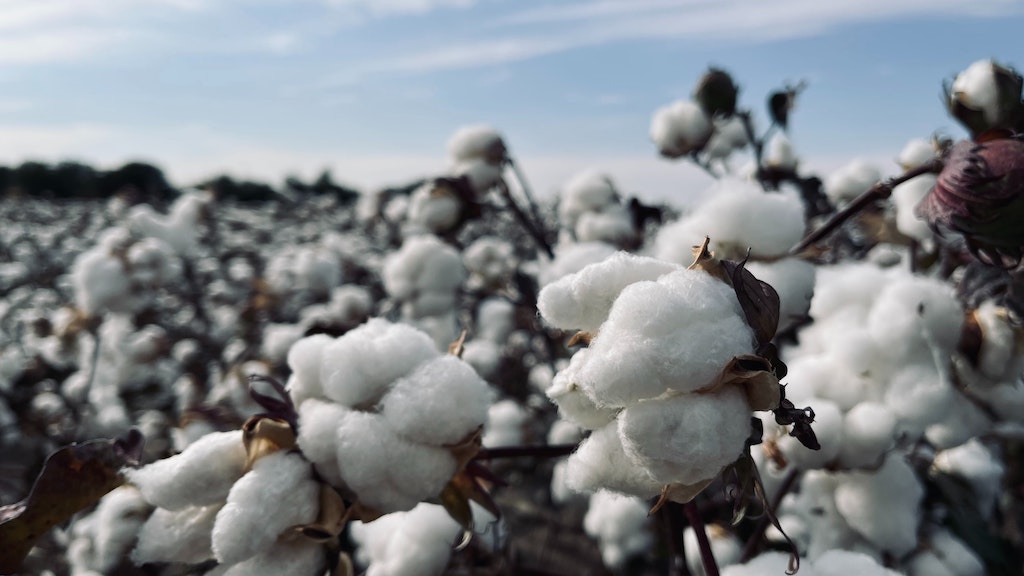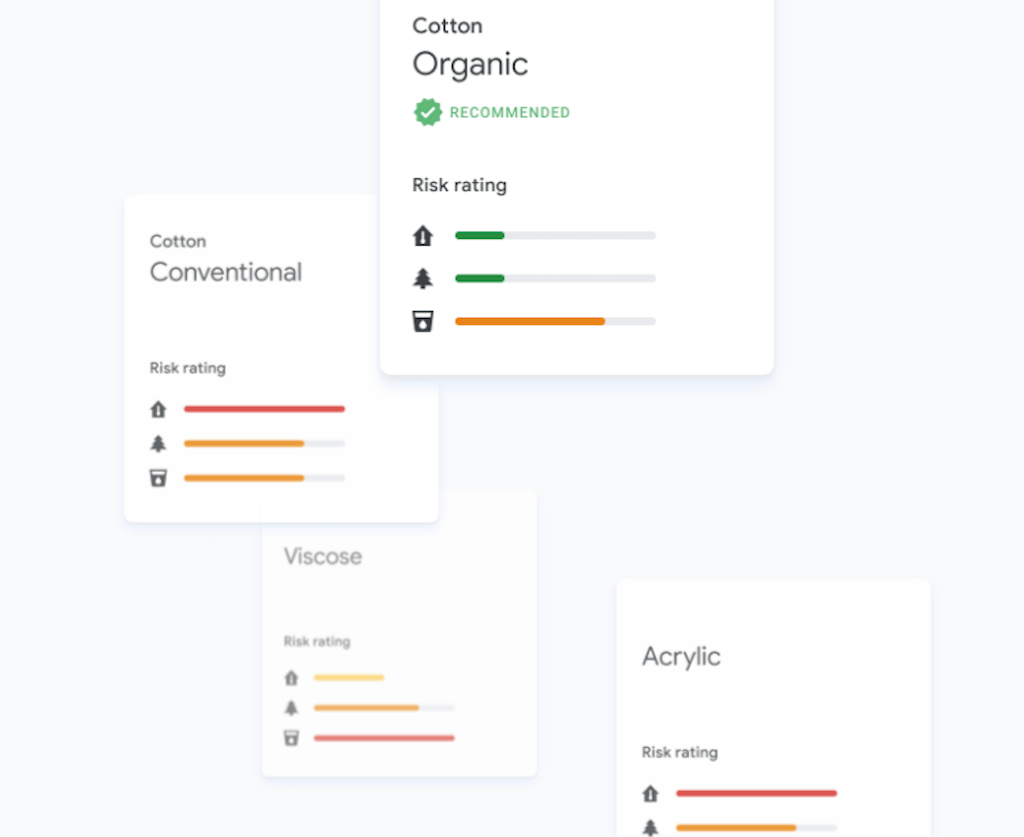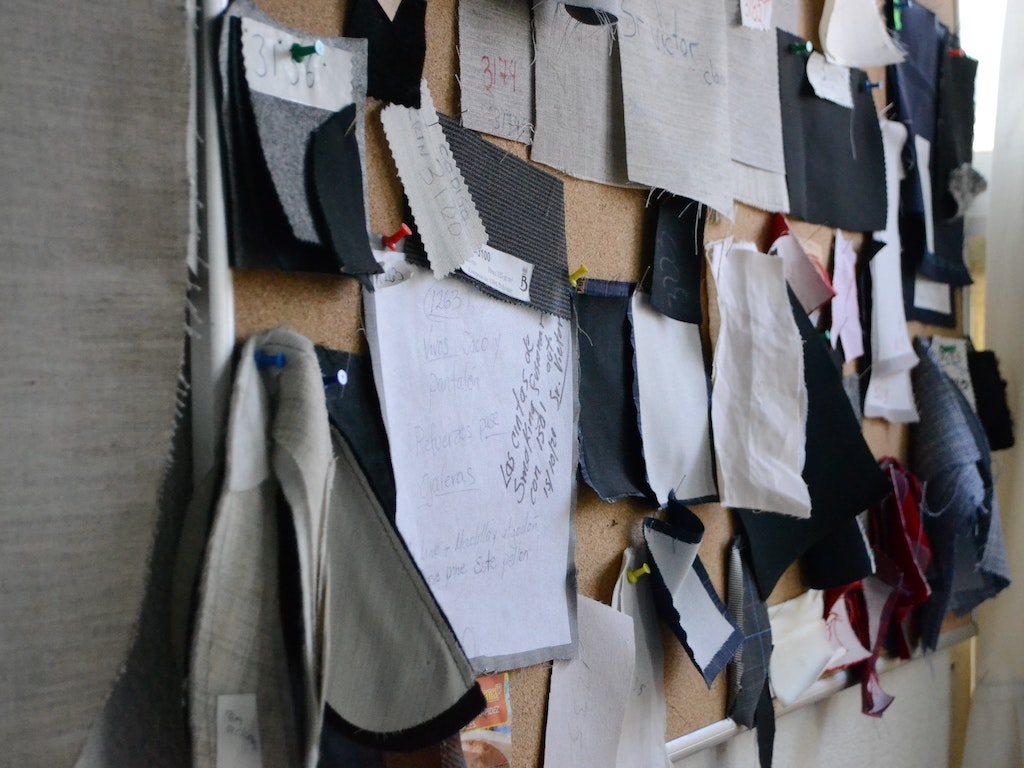3 Mins Read
The new Global Fibre Impact Explorer developed by Google and WWF is being expanded under NGO Textile Exchange to transform the way the fashion industry sources raw materials.
Fashion brands are racing to clean up their supply chains as conscious consumerism takes hold, but one of the biggest challenges comes down figuring out how to responsibly source the raw materials—the fibres and fabrics needed to make our clothes. One new tool is targeting the raw material market, where data tends to be particularly fragmented and opaque.
It’s been developed by Google and WWF, which teamed up last year to create a platform that could provide the insights that brands lack access to in order to make sustainable sourcing decisions.

Global Fibre Impact Explorer
Called the Global Fibre Impact Explorer (GFIE), the digital tool has just released its first case study with Stella McCartney. Incorporating everything from climate risk to water impact, the tool informs the brand’s sourcing strategy in Turkey, where it sources its cotton from.
This pilot showed how the tool’s algorithms were able to identify water risk challenges and low soil carbon in the Buyuk Menderes region in western Turkey, which signalled to the brand that much more investment was needed to bolster regenerative farming with local cotton producing communities.
“Consumers are insisting that they understand where their clothing is coming from. But often, the very people producing the product don’t have the information they need. And they’re desperate for it,” shared Stella McCartney. “This tool is a great answer for us at Stella McCartney, and for the broader industry, to really understand the impact of where they’re sourcing from.”

Related: Two ex-Googlers created a digital wardrobe app to make resale fashion easier
Industry-wide access by 2022
While still currently in pilot stage, the tool is now being scaled-up by Textile Exchange, an international NGO dedicated to responsible raw material sourcing in the textile industry. At the moment, the platform is being tested by some of the biggest names in fashion—the likes of H&M, Zara’s parent company Inditex and VF Corporation—but will be commercially open to the whole industry by 2022.
Aside from informing cotton sourcing, the platform draws from data across more than 20 fibre types, from natural fabrics to cellulosic and synthetics. The interface assesses risks of production of these fibres by region, bringing in national and sub-national data on multiple environmental factors, such as air pollution, forestry, water use and biodiversity.

This takes it a step further than brands’ own life-cycle assessments, which often fail to consider the local intricacies of raw material sourcing.
“[It] but doesn’t fully capture contextual risks in sourcing locations,” explains Marcus Albers, acting director of finance and corporate engagement at WWF-Sweden. “This collaboration with Google draws together both impact and risk data to provide a more holistic assessment that should provide significant value and insights for the industry.”
The GFIE has been reviewed by a panel of global experts, among them the IUCN’s James Dalton, Lindita Xhaferi-Salihu of UN Climate Change, and Dr. Mark Summer of the University of Leeds.
Lead image courtesy of Unsplash.



